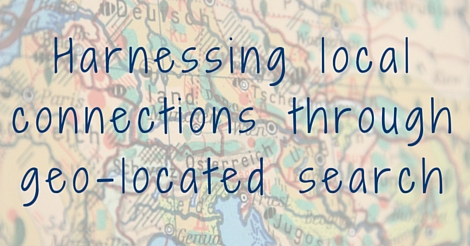
Social media has the power to connect us with and discover the rest of the world. But how can you as a business use this tool to make meaningful connections closer to home and start conversations with your local audience?
Twitter’s Geo-Located search function has been designed to facilitate exactly this. Allowing businesses to filter search functions according to distance, this development can display the messages sent from potential customers in the near vicinity. You can even refine your search to brand mentions or industry-related terms based on your location.
How It Works
-Use the search icon (magnifying glass) in the right hand corner.
-Enter your search term. If you’re a new gym looking for clients, you could search #gym.
-Click the icon on the right of the search field to refine your results.
-The Twitter stream will then display local search results.
If you want to get chatting to people who are physically in the vicinity, starting these conversations online can provide a useful starting point.
 The Cons
The Cons
With most technology there are inevitable limitations, and Geo-Located search is no exception.
If your customer is not a Twitter user you won’t be able to connect with them via this platform. This may sound like an obvious point, but it’s worth remembering when you’re trying to reach out to new fans. This is an especially important consideration if you’re working in an industry whose target demographic are less likely to be Twitter users, or indeed social media users at all.
Even if some of your target market are Twitter users you will still contend with user preferences. Unlike Facebook who collect information on what you ate for breakfast three years ago and know all about your secret phobia of clowns, Twitter is just happy for you to anonymously join the party. This means that if you’re the gym looking for new clients you’re unlikely to find the fitness fanatic who lives around the corner but who never tweets about their #gym interest or activities.

The social media platform facilitates much more anonymous usage – users can not only disable location services on their mobile devices, they can also choose to leave their location absent from Twitter.
It’s also worth remembering that people have different personality traits and preferences to one another – behaviour that often carries over into the world of Twitter. So, there will be more data available for chatterbox Charlie who tweets all day long, but much less for Sam who is prefers to read and scroll. This will skew the data available to you, which is worth keeping in mind should you base marketing decisions on this data.
Overall
This is a highly useful function that could help you engage with more people locally. Use it as an integrated component of a marketing – and a pinch of salt – to get more involved with people nearby.
Georgina Hawkins, Community Manager.